We live in an area of Nova Scotia known as cattle country. The land undulates between fields and forests, with handsome red or weathered-grey barns, and dusky cemeteries with tombstones like worn teeth. There’s even a hamlet called Old Barns. The fields grow feed corn and hay. Tractors roll down the roads. There are also many empty pastures, now turning or turned into meadows because most of the cattle live in huge sheds, lined up in hundreds of individual stalls over which lights shine brightly all night, every night.
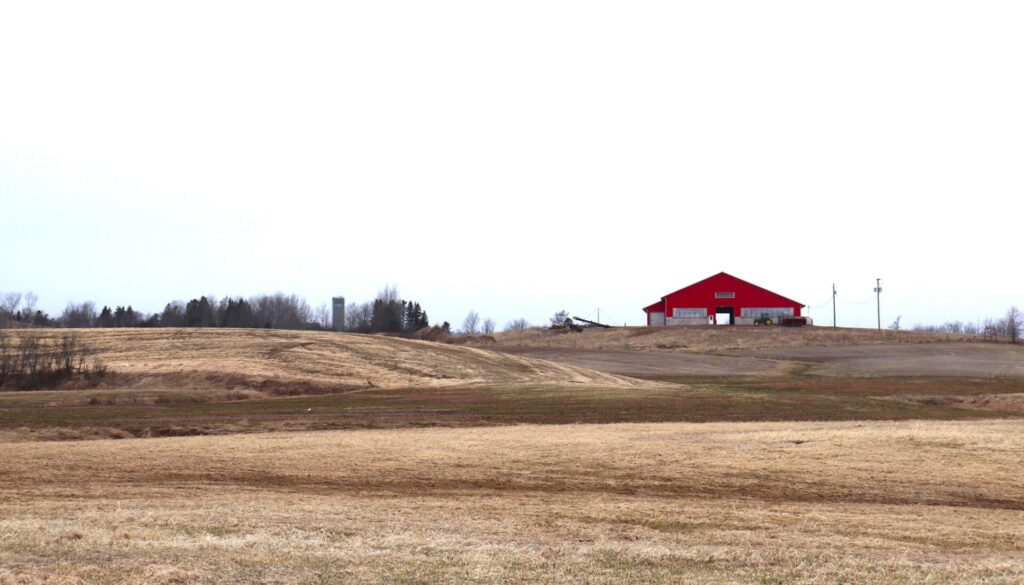
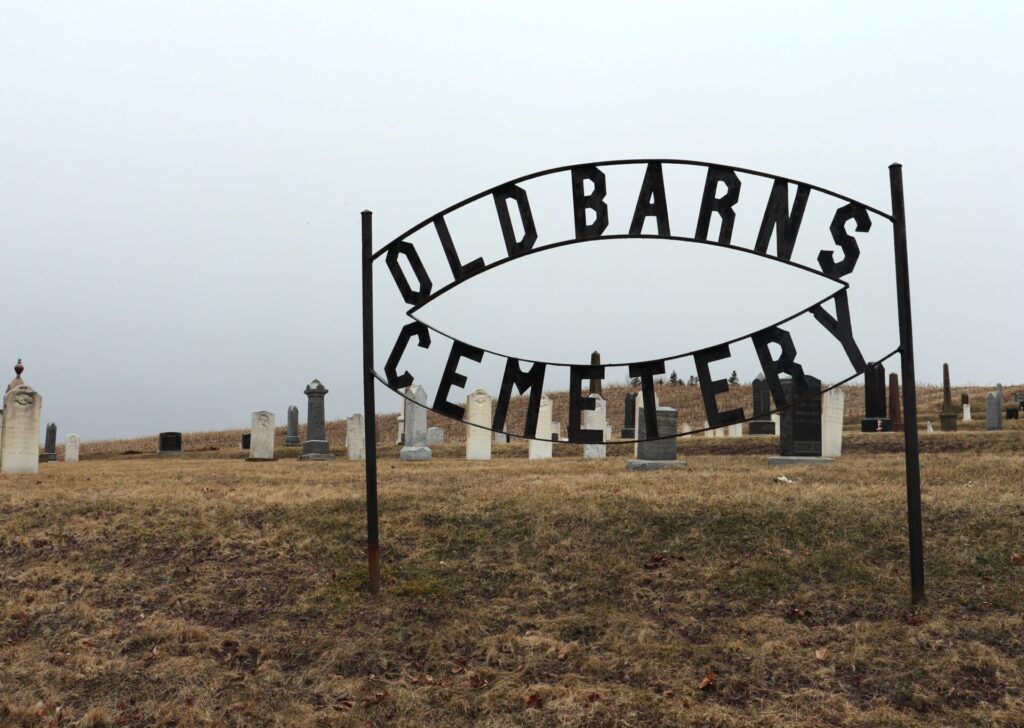
There was once a proper barn on our land too. Grazing cows are faintly visible in one of the old photos of our place, given to us by a local man who came down the driveway one day, introduced himself, and related that he’d been born in this house—which then consisted of one room and a sleeping loft for two adults and their children.
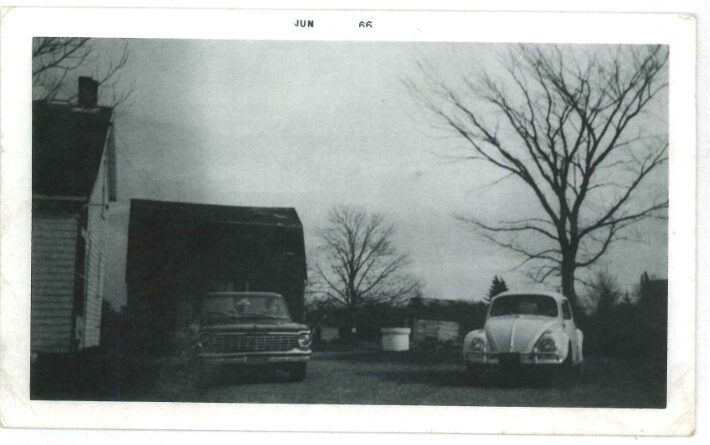
Lately, we’ve been finding rusty cattle fencing on the ground at various boundary lines: barbed wire along the south perimeter, or the ledge where the land drops down to the waterfall. We yank it up, cut and collect. Very satisfying, this symbolic opening of borders. Strolling about the lands south of here, I met a dead tree recently whose trunk is deeply embedded with three lines of barbed wire from such a fence. Someone must have used the young tree as a post, stretching the wires across it. The fencing was so tight that the tree had no choice but to absorb it, which it did. And managed to grow forty or fifty years, living like that, before it died.
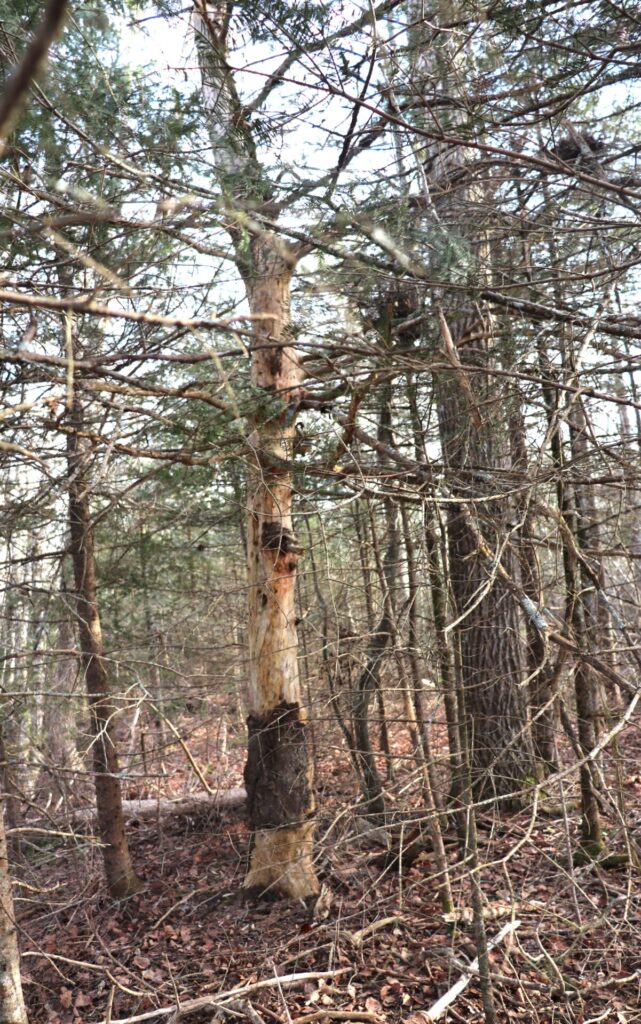
As you can see, the tree lived semi-garroted. The wood fibre surrounding the embedded fence is twisted abnormally into crazy whorls, a history of the tree’s struggle to hold these wounds and keep living. How many of us, people and trees, go through life that way.
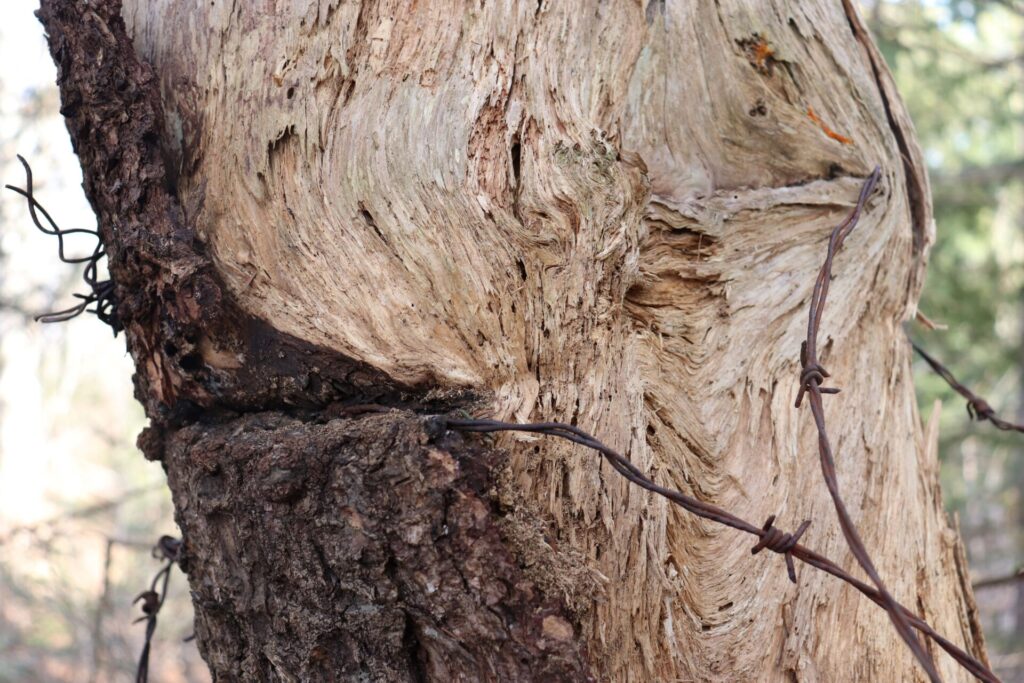
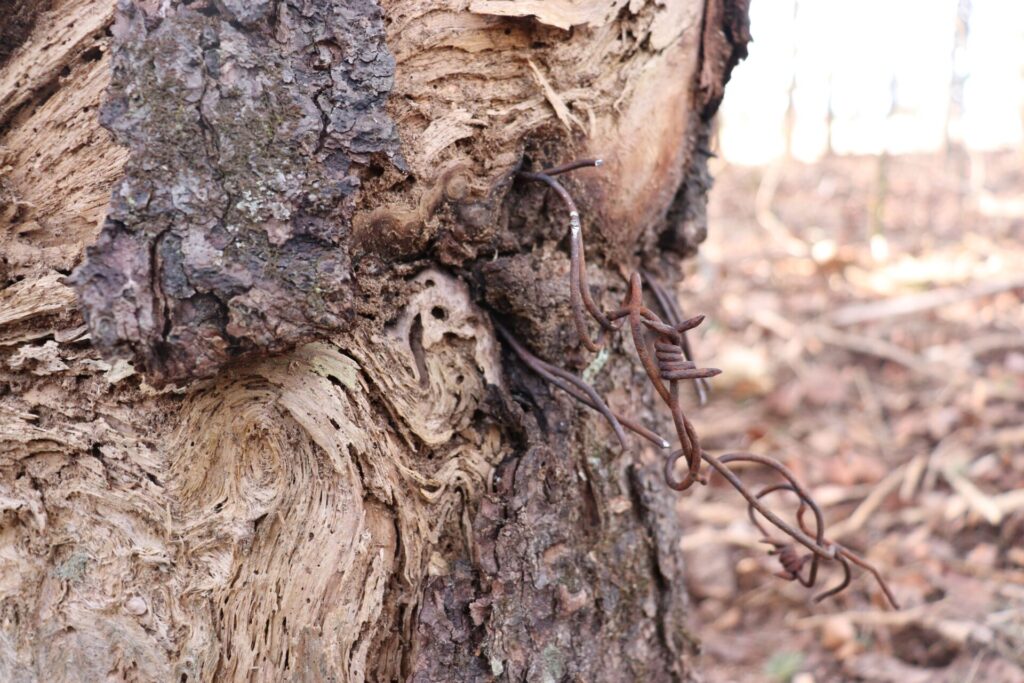
Unlike the other fencing we’ve found, all of it long fallen, this fence was still partially in place because it was held up by the tree, who was still doing its job after all these years, despite the absence of cattle. Enlisted in someone’s forgotten project for life.
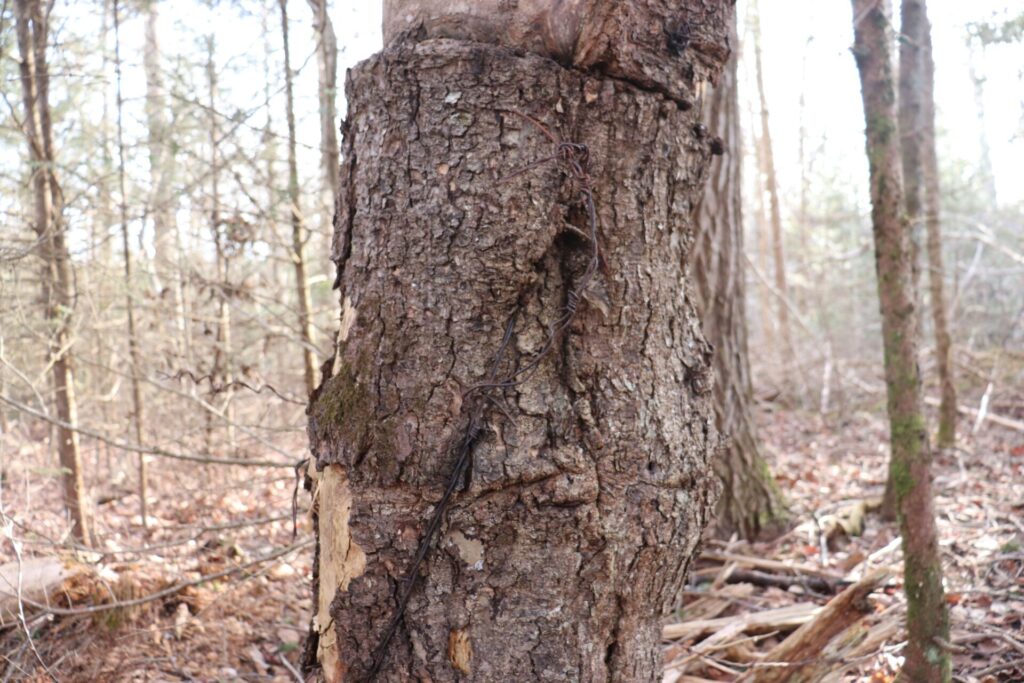
This is not, exactly, a post against putting up fences. Rather, it’s about how casually and brutally lives can be damaged forever—be they those of cows, trees, landscapes, rivers, and human communities, of course, even entire peoples and nations—and how much this happens and is deemed acceptable when life is not revered for what it is: precious, sacred, mysterious, awesome.
On the heels of my meeting the fence tree, a close friend of mine said something that shook me. She was born in 1945, the year the US dropped the atom bombs on Japan. “War is embedded in me at the cellular level,” she reflected, because that horrific act was the context of her birth. Its aftermath has been her life. That’s her barbed wire fence, tangled within.
When she spoke, I thought about my own birth year, 1965. The middle of the Vietnam War. The Cold War. The Doomsday Clock. How the normalization of war is an ideological implant in the body-minds of people. As was, for me, the normalization of growing up in a place where some peoples had been removed to reservations, socially and territorially fenced off, and where my grade school had an air raid siren on the roof, regularly tested. As was and is the normalization of making and pouring poisons on the earth, into our air, water, and bodies of animals and people—because it’s easier that way for some to make money. More ideological implants.
War has no real winner. Some people make scads of money. Everyone else loses. Lands are destroyed. Generations traumatized. The abomination that is war should be named as such, constantly. Opposed, always. Six months of Israel v. Hamas, more than two years of Russia v. Ukraine, and against my will, my taxes help my country supply weapons for these bloodsheds. I am that tree, holding up my part of the fence. Unlike that tree, I can cut the wires. I can dissolve the mindset of enemy-making and separation from life—the implants within.
Nobody around here knows who owns the woods where the fence tree is, which suits me well. I’ve begun removing the exposed wires from the trunk, tracing the fencing and cutting it up. It’ll take some time. Meanwhile, spring is here. The soil’s birthing rhubarb crowns and tender green shoots of chives. In the morning, deer graze the fields and mists drift over us. Creation keeps creating, spirit keeps moving; the deer’s dark eyes gaze into mine in shy recognition, heart to heart. The fence tree continues to die, housing and feeding others, giving itself freely including its story. No other tree on Earth looks exactly like this one; it’s a unique individual, as are we all. We only come around once in this form.
Life is precious, sacred, mysterious, awesome.
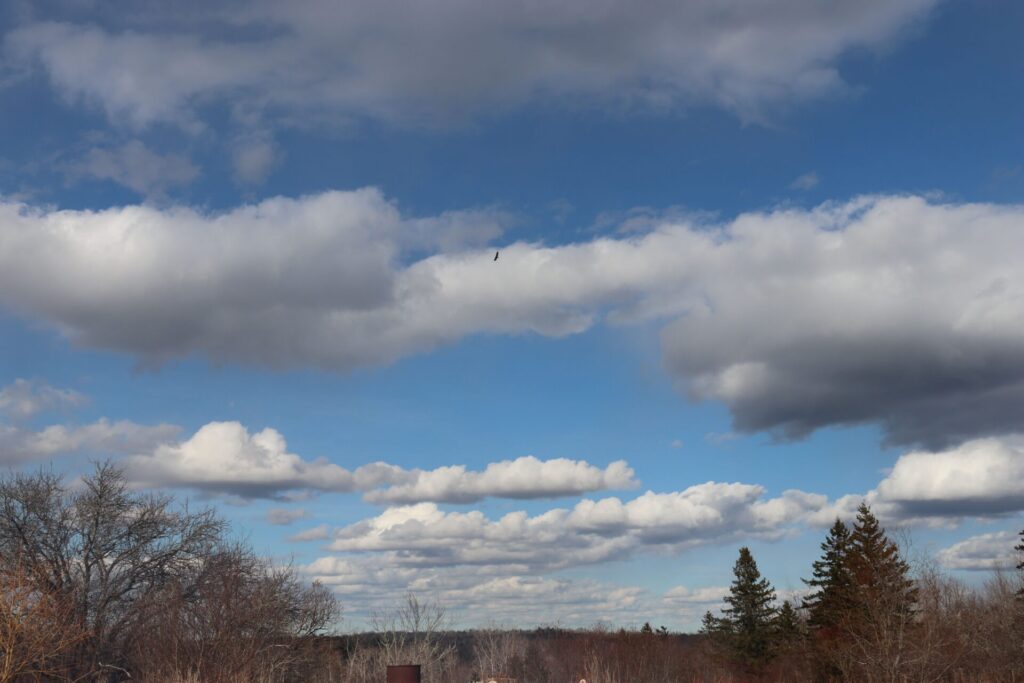
Spring 2024
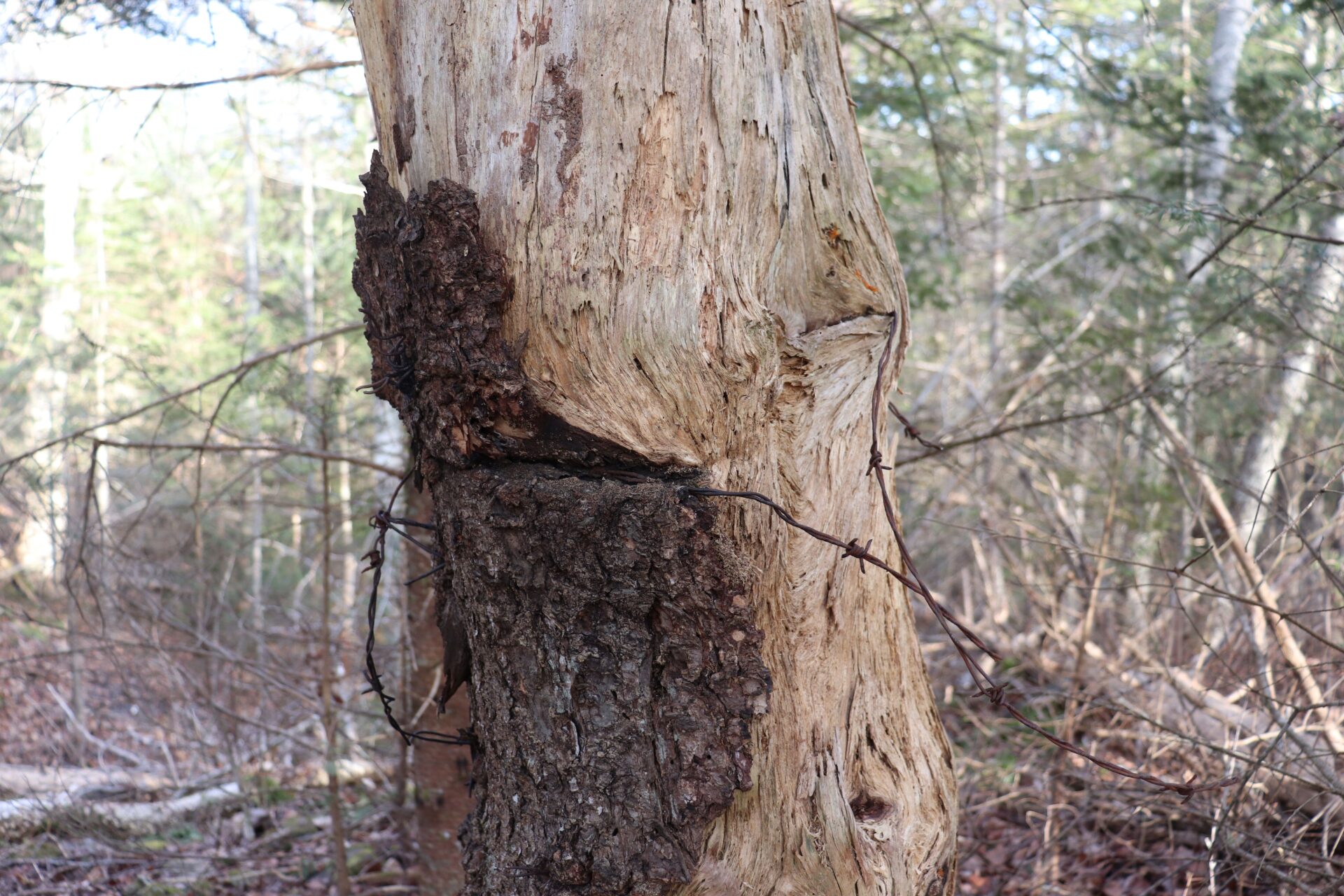
Beautiful and breathtaking.
as usual my dear.
thank you!
_/\_
Thank you, my dear. xx
Moving connections between natural world and us and war waged everywhere–embedded in our cells…Yes, that is how I recognize the perniciousness of war–it’s enduring half-life in me, the tree you honor and us all. Thank you. Mind changes releasing the grip of imperial nature of so many of the human species–not all, but so many.
Moving connections between natural world and us and war waged everywhere–embedded in our cells…Yes, that is how I recognize the perniciousness of war–it’s enduring half-life in me, the tree you honor and us all. Thank you. Mind changes releasing the grip of imperial nature of so many of the human species–not all, but so many.
Thank you, dear Sharon!
thank you Sharon, your writing touches viscerally into the connection all beings share.
so vivid the landscape you describe you live in
Thank you for reading, Sharon! This is a potent place to live and I’m deeply grateful for the opportunity.
Yes yes so much bad stuff is embedded in us!
Beautiful piece
Thank you, Lise!